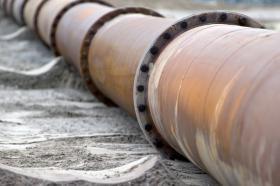Page 1
EPIB Trail
Volume 7, Issue 4
The EPIB Trail In This Issue... Environmental Super Bowl (2) Amazonian Soy Moratorium (3) Regional Greenhouse Gas Initiative (4) Keystone XL Pipeline Update (5)
The EPIB Trail staff welcomes students and faculty back to school for another semester, and thanks you for your continued loyal support. As we enjoy our last freezing days before Spring begins, we are excited to share with you the February 2015 edition of the Trail. Stay warm and don’t let midterms get you down! Your editors,
Water Filtration at Rutgers (6) Environmental Education (8)
Holly Berman, Chloe’ Lewis,
Japanese Solar Technology (9)
Alexander Toke, and James Duffy
Implications of Gas Prices (10) Climate Change Inequality (11)
A Special Thank You to Our
Human Waste Power Plant (12)
Wonderful Advisors:
Galapagos Giant Tortoise (13) Tiger Populations in India (14) Israel’s Vegan Culture (15) Pipelines in the Pinelands (16) Natural Gas Evaluation (17) Issues in Animal Agriculture (18) Mystery Goop Killing Birds (19) Oklahoma Earthquakes (20) Rhino Conservation Update (21) Centralia Coal Mines (22) Renewable Energy Island (23) Sierra Nevada Red Fox (24) Seafood Labeling Fraud (25) Trail Mix (26)
Kristen Goodrich & Dr. George F. Clark Meet the Writers... Arcadia Lee Papalski Matt Golden Christopher Wilkinson Holly Berman Alexander Toke James Duffy Alexander Nayfeld Sagarika Rana Alexus Lizardi Langley Oudemans Ryan Koch Christopher Wilson Back to Index
Marc Katronesky Tom Armstrong Jeanne-Marie LaVergne Collin Dobson Ariel Schwalb Derek Leckner Morgan Lewis Christi Capazzo Rishi Jaggernauth Will Shinn Chloe’ Lewis Melissa Mertz

















